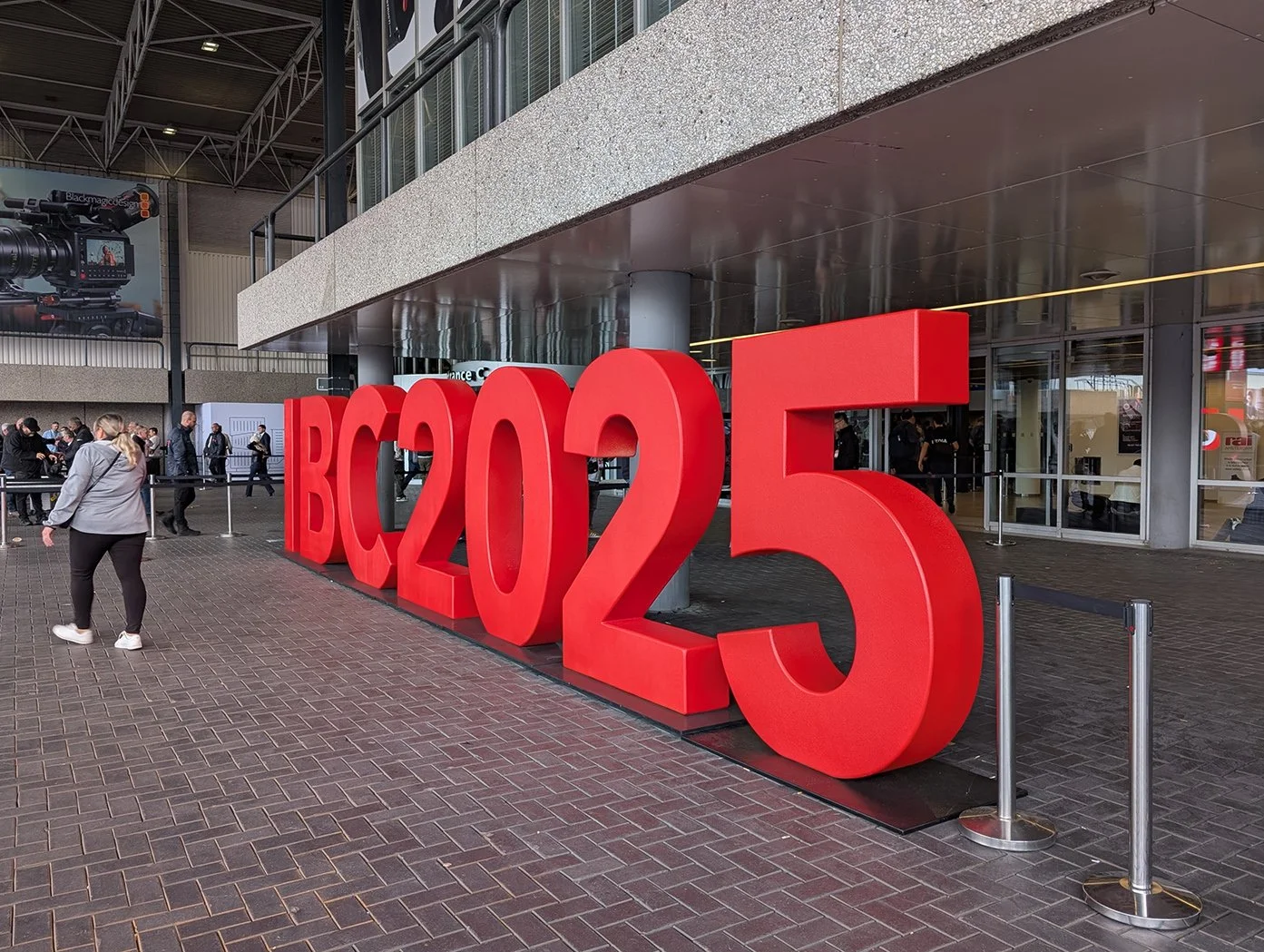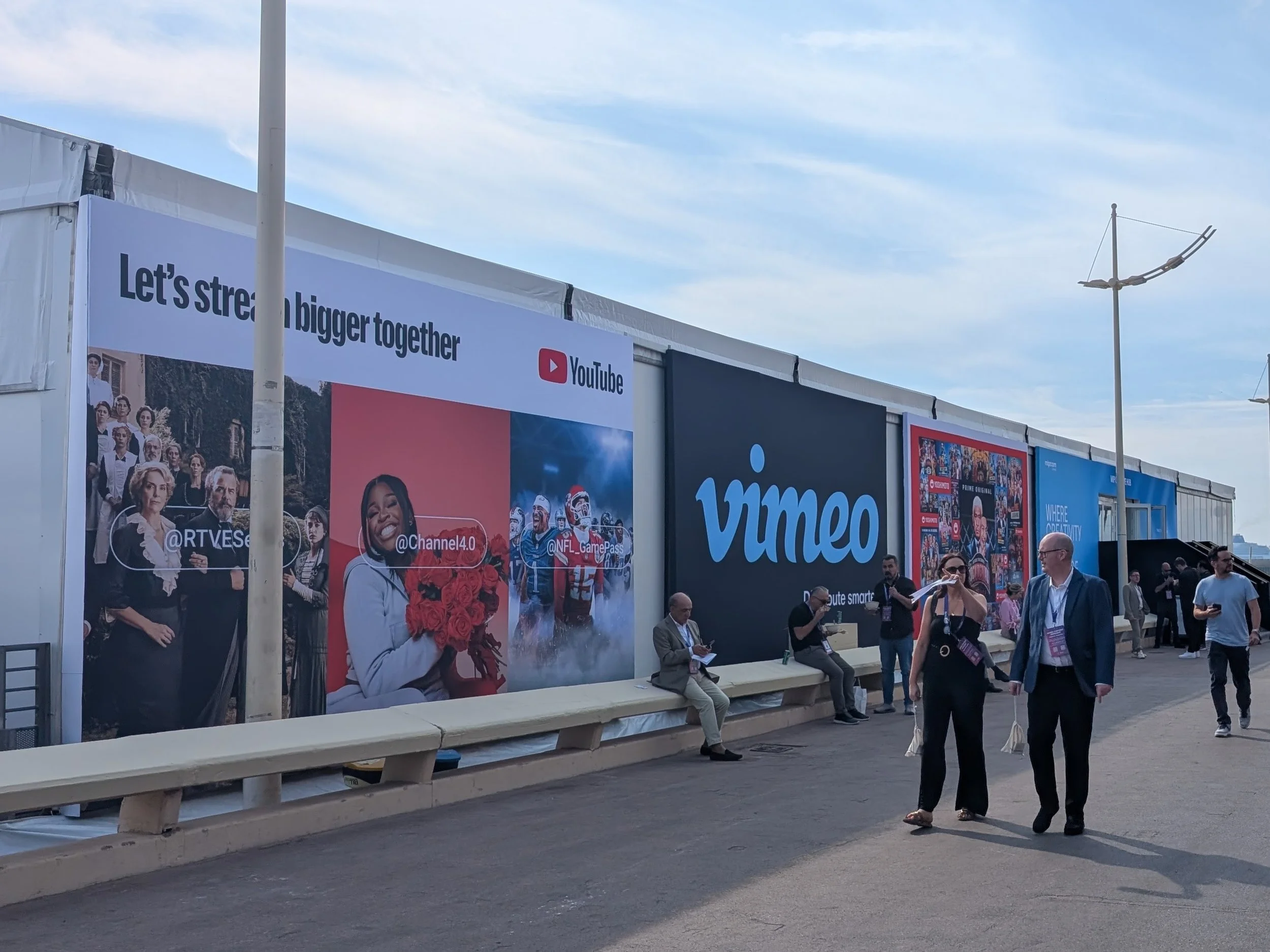A Technology and a Content Market: 7 Key Takeaways from IBC & MIPCOM 2025
The Trends defining Media: Efficiency, AI, and YouTube
From September to November, the M&E tradeshow calendar reaches a peak in Europe. At Knox Media Hub, we’ve been on the ground at many of the season’s main gatherings, most notably to IBC and MIPCOM. A technology market and a content market - two sides of the same coin.
We’ve scanned the floors, read the reports, attended panels, and had countless conversations. We've taken the time to connect the dots, observing cross-industry trends that summarize where the industry stands today and where it’s heading next.
Here’s our take 👇
1. Budgets Squeeze, but Optimism Rises 📈📉
Across both IBC and MIPCOM, a common observation emerged: reduced profits and heightened competition are squeezing budgets. However, this is not leading to buying less, but a shift in mindset: the industry is actively seeking efficiencies and speed-to-market.
In this paradigm we are seeing companies wanting:
Tangible outcomes. Operations teams want to know: What will speed up my workflow? What will solve this exact bottleneck? Decision-makers across content and technology departments seem to be prioritizing efficiency and cost control tools. This also explains the move toward software-defined workflows and pay-per-use models.
Data. Every window and every audience now counts. Companies are prioritizing data collection to improve cost control, efficiency, and monetization. The need for a "single source of truth" that converges data for analytics is paramount.
Knox Media Hub is well-positioned as an efficiency enabler. Our data-driven approach gives clients detailed insight into every transaction and operation, with pricing that scales with your business volume, and automated workflows, which are no longer a nice-to-have but a must.
In short, Jens Richter, CEO Commercial & International, Fremantle, said in Broadcast about MIPCOM 2025 takeaways: “There is a pragmatic optimism.” And it might well apply to the overall IBC sensations.
2. Fragmentation demands Interoperability 🧩
From a technology standpoint, companies are moving away from single, locked-in vendors. Instead, they are building ecosystems by choosing the best-of-breed solutions for each specific need. The "multivendor" approach was a constant refrain, with the IBC Innovation Award for Sky’s “Media Mesh" highlighting this trend perfectly.
However, this multivendor environment creates a new challenge: interoperability. As the IABM’s Mediatech Radar September issue noted, “communication and collaboration between vendors [and clients] were highlighted to be more important than ever in several conversations at IBC.”
To avoid getting lost in a sea of disparate systems, a single source of truth is, again, crucial for managing assets and ensuring data can flow smoothly between tools. This is where a central media hub becomes invaluable, breaking down silos and enabling a cohesive, interconnected workflow.
At MIPCOM, fragmentation was also visible on the audience side. Not only media companies are forming partnerships to build resilience and reach, but content distribution is now multi-platform by default, reaching fragmented audiences across broadcasters, streamers, and social platforms.
3. Reaching every screen at once requires of great flexibility 📺 💻 📱
“No one delivers to just one channel anymore.”
This line we heard from a panel session at the IABM Impact Stage sums up today’s challenge: content must reach every screen and format, from linear TV to TikTok micro-content. Broadcasters are becoming content owners, and streamers are partnering with “traditional” broadcasters, blurring the lines further.
On the other hand, the rising interest in micro-dramas and vertical video at MIPCOM only adds to the complexity, requiring systems that can manage any format within a single company.
This multi-platform and multi-format reality means adaptability is critical. A single asset may need to be adapted for five different platforms, each with unique specs. Workflows must be agile enough to handle linear broadcasts, daily social media content, and long-form series simultaneously.
At Knox Media Hub, we’ve built our platform to be fully agnostic, adaptable to each client’s model, and scalable to any workflow, ensuring that no matter the platform, delivery remains seamless.
4. The Cloud matures ☁️
The move to the cloud is no longer a question of "if" but "how."
The industry has gained significant expertise, and companies are making smarter choices for balancing control, flexibility, and cost efficiency. We are all talking more than just storing assets; it’s about bringing entire workflows into the cloud to achieve greater flexibility and agility.
The major presence of major cloud providers (Google, AWS, Microsoft) at IBC reflects the foundational importance of cloud infrastructure, which now underpins everything from AI to live production workflows.
A "hybrid" model is also the trend. Companies are developing strategies that determine what stays on-premise and what moves to the cloud, because some workflows are just more suitable on-prem.
We also saw how Software-as-a-Service (SaaS) models, enabled by the cloud, are also gaining traction. They allow for faster adaptation to new technologies and provide greater cost control, reinforcing the trend toward agile workflows.
5. The Live Era is Pushed by Sports ⚽ 🥎 🏈
End of 2024, it was made clear that sports are king, and this extends also to live content, to counteract streaming stagnation. Netflix live-streamed NFL on Christmas, and TikTok revealing that 57% of their users watch sports content on the platform weekly set the tone for 2025.
At IBC, live production was a main driver of technological innovation: low-latency, ultra-low latency, 4K streaming, … the floor was filled with vendors focused on solving streaming challenges and the push to deliver the best possible live experience seems relentless.
This innovation runs parallel to the business of sports, which is constantly exploring new paths to create more engaging fan experiences. This trend was reflected at MIPCOM, where streaming platforms like DAZN and Twitch also had some presence.
6. YouTube is Everywhere ▶️
The most defining element of MIPCOM 2025 was YouTube’s first-time presence. There is no doubt it is a dominant force in the M&E landscape. It’s no longer just a platform for independent creators; it’s a critical distribution channel for broadcasters, content owners, and sports leagues alike.
In a broader sense, we saw that the creator economy marks a generational shift. Creators are expanding from short-form social video into long-form formats, developing their own IPs, and securing shows on major streaming platforms. At MIPCOM, the market actively explored effective strategies for partnering with, monetizing, and managing creator’s content and talent. The most recent NAB Show New York proves that the topic is also very present in technology markets.
We observed firsthand the growing impact of Youtube. A common question we heard was, "How can I accelerate distribution to YouTube?" Content needs to be packaged differently, with appropriate transcoding, audio channels, subtitles, and metadata. Automating these preparation and delivery workflows is becoming crucial for efficiently reaching this massive audience. YouTube functions as a business model, a marketing tool, and a distribution channel simultaneously, and requires workflows that treat it as such.
And to answer the most frequently asked question: yes, you can push content directly to Youtube from our platform.
7. AI's Role is Consolidating Around Efficiency 🚀
At technology markets, AI remains everywhere. Agentic AI, as in the rest of the world, was the buzzword throughout the events.
However, the buzz has shifted from broad concepts to practical integration. The industry is learning to distinguish between flashy demos and genuinely valuable applications. We are "myth-busting AI" and focusing on tools that solve real problems. The primary role for AI right now seems to drive efficiency. It is being used to remove bottlenecks in repurposing and localisation workflows. AI tools that automatically read video content and enrich it with metadata are also proliferating.
The new challenge is what to do with this massive layer of data. Companies that have unstructured data, will translate into to low-quality AI deployment. A central platform that can ingest, manage, and visualise this AI-generated metadata will be essential to unlocking its value. Interoperability is key here as well. This avoids creating siloed AI solutions and allows businesses to build a best-of-breed AI ecosystem.
We are also seeing companies wanting to test different AI models for specific purposes (such as using different providers for different languages in dubbing) and need a system that can connect these tools to the rest of the workflow.
On the creative and content-selling side, AI has been notably absent from recent conversations. Concerns over data provenance and copyright issues, alongside ongoing industry lawsuits, may explain this shift.
💡
In summary, we’ve seen that from Amsterdam to Cannes, the direction of travel is unmistakable: success in the M&E industry requires uncompromising flexibility, data-driven decision-making, and a constant push for operational efficiency. Companies are learning to build their own ecosystems, blending best-in-class technology with operational pragmatism.
At Knox Media Hub, we see this transformation first-hand, helping media companies streamline their operations, centralize their assets, and deliver to every screen faster and smarter.
📚 For an extra reading on the state of Media Tech we recommend DPP’s report IBC 2025: Demand vs Supply
Want more Media Technology insights? Subscribe to our newsletter 📥






